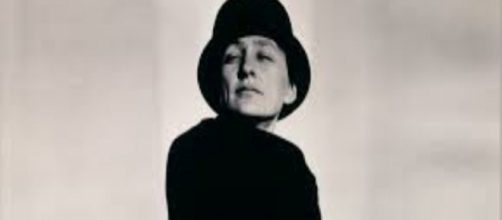In a presentation called “Georgia O’Keeffe: Living Modern,” the Brooklyn Museum offers a looksee at the clothes she wore and the way she posed for the camera as evidence of a “self-crafted public persona.” In the museum’s view, peering at her apparel and pictures taken of her “expands our understanding of O’Keeffe” and her “artistic values.” This is a crock! Displaying the contents of an artist’s closet and close-ups of how others saw her has zero to do with her “artistic values.” Calling, say, a pantsuit or wrap dress a clue to appreciating her art is like saying that seeing Salvador Dali’s signature ermine headwear and silver-handled walking stick enhances our understanding of his work.
Even more ridiculous is the notion that images of O’Keeffe by lens artists like Alfred Stieglitz and Ansel Adams tell her story because they clearly describe the photographers’ viewpoint.
Is female art tainted by the artist’s gender?
This is not to say that questionable insights into O’Keeffe’s work are anything new. For years, art critics saw her flower paintings as visions of vulvas, which bothered her a lot. As she famously said, “The critics are just talking about themselves, not about what I am thinking.” Case in pointlessness. British art critic Adrian Searle not only saw female genitalia in the flower paintings, but also in the folds of the hills in her landscapes. Even her artist-husband Stieglitz followed the male take on her work when he said, "The woman sees the world through the womb.
That is her deepest feeling. Mind comes second." This is hard to comprehend given that he lived with O’Keeffe and presumably knew her goal in picturing flowers up close. As she has often been quoted saying, “Most people in the city rush around so, they have no time to look at a flower. I want them to see it whether they want to or not.”
Perpetuating a myth
Bad enough female artists had it rough getting the male-managed art world to pay attention to their work, but when it endured hits from the male mindset, well, just check out sculptor Marisol Escobar’s story. Her figure art -- wooden tableaus of women hemmed in by their prescribed roles in middle class society in the ‘60s – was not taken seriously.
Granted she’s a loner and not one to hang out with other artists. But despite the historical fact that several artists through the ages were reclusive, she was seen as mystifying, which she said reduced her as an artist. “I don’t feel like a myth…I spend most of my time in my studio... but I have to seem like a spook...I was just an artist like any other.” That was O’Keefe’s self-image, too.

